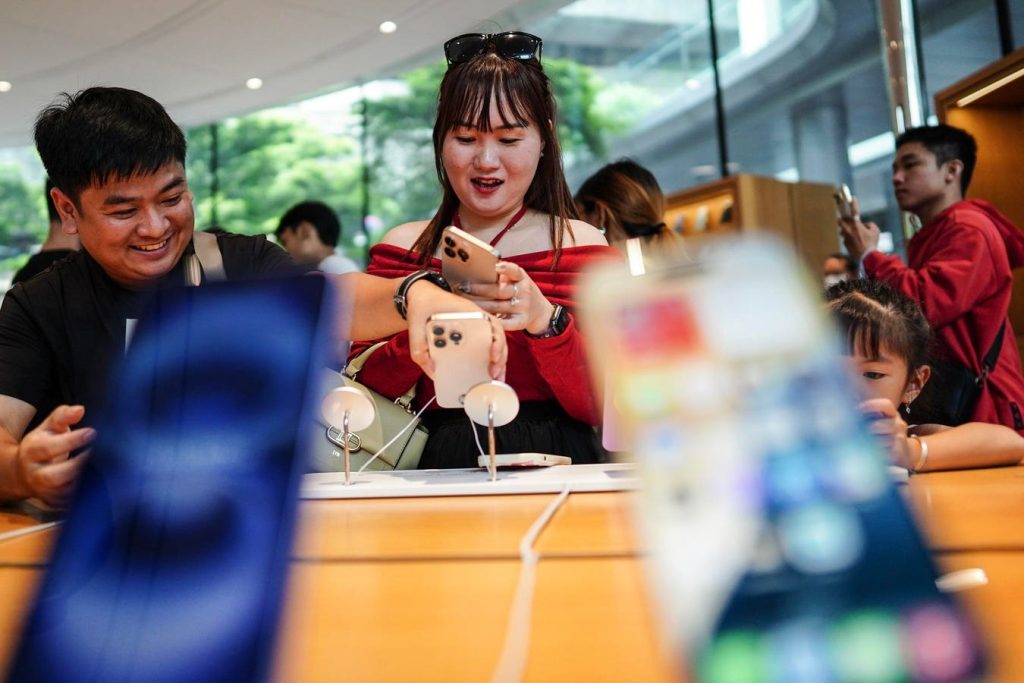Update September 23 with details on Apple’s marketing of the iPhone 16 Pro, and the design changes to make the iPhone a more repairable smartphone.
Apple’s community is preparing to enjoy the latest iPhone hardware with the highest specifications, a new and physical user interface around the camera, and the transformative power of AI. While these will delight, they all arrive with an air of disappointment.
Update: Monday September 23: The team at iFixit have undertaken their customary teardown of a new smartphone to assess how it has been put together and, more importantly, how easy it is for users to repair. This is one area in which Apple has made noticeable improvements.
Servicing and replacing batteries have been improved, although not every iPhone model is getting every change. First, the iPhone 16 and iPhone 16 Plus models have a new adhesive that keeps the battery in place. Rather than requiring pure force to separate the battery, passing an electric current through the adhesive will loosen it.
While the iPhone 16 Pro does not have this update, it does have a new casing around the battery cells. Rather than the software material used in older models, the iPhone 16 Pro battery now comes with a more traditional hard shell casing, which offers more protection in case of a screwdriver or tool slipping and impacting the power source.
Finally, the iPhone 16 Pro has a tweak to the physical design that allows the battery to be replaced through either the front or the back of the smartphone, whichever is more practical given the circumstances.
And while the iPhone 16 Pro Max misses out on all of these battery changes, the steps towards a more repairable iPhone will be welcome across the industry, even if issues around using DRM to lock parts to an individual iPhone remain.
Update: Sunday September 22: Writing for the Power On newsletter, Mark Gurman highlights the side effects of the delayed introduction of Apple Intelligence. It is being released in three stages over the next six months: iOS 18.1 in October, iOS 18.2 in December and iOS 18.3 in March. That long cycle of releases stands in stark contrast to both the presentations made by Tim Cook and his team at the iPhone launch and the advertising campaign being run alongside the new smartphones:
“This is where Apple is being a little disingenuous with its marketing. The company claims the iPhone 16 is the first model “built from the ground up for Apple Intelligence.” The reality is that the processor and other hardware in the new iPhones isn’t meaningfully better for AI. The key factor is having 8 gigabytes of memory, the minimum required to run Apple Intelligence.”
The power users who look forward to new software features and hardware choices will likely be owners of last year’s iPhone 15 Pro or 15 Pro Max. While Apple can count on some of these to be automatic upgrades—perhaps they are on Apple’s annual “new iPhone” program or are simply the sort of fans who will automatically update every year no matter how incremental the iPhone 16 Pro update actually is.
The specifications may be higher than the iPhone 15 models they replace, but they are not significantly higher. The display can go a little dimmer and a little brighter as required. The A18 Pro chipset runs faster than the iPhone 15 Pro’s A17 Pro, which was already enough to cope with most of the phone’s demands. Apple has increased the memory with a view to supporting new AI tools, and the battery life when watching videos has increased.
All of these are larger and more welcoming than twelve months ago, but none feel like progress. Instead, Apple has kept pace with wider industry trends, and as the only manufacturer of iPhones, those looking for something a bit better have no choice but to buy the iterative update.
But there’s one area where Apple has innovated hard.
Following on from the introduction of the programmable Action Button to the iPhone 15 Pro and 15 Pro Max last year, Apple has gone button crazy. The Action Button is now available over all four iPhone 16 models, and a second capacitive button has been added. The Camera Control button acts as a shutter button, but thanks to its capacitive nature, it can offer a multitude of functions, all accessible under a single finger.
This includes controls for exposure and depth of field, along with photo filters, zoom, and switching between photo and video modes. There’s no doubt that the camera control button is a welcome addition to the interface. Forbes contributor David Phelan picks out this one change as a game-changer for the shutterbugs:
“There’s a learning curve here, but it’s shallow and easily managed. And the results are terrific—this is easily the best way to shoot video and stills on an iPhone, with perfect placing of the button and fast and responsive mechanics in the Control itself.”
The camera control button is one of the delights of the new iPhone design, but it’s arguably the only significant addition to the package. Does one button make a banquet?
There is, of course, one elephant in the smartphone room that is revolutionising the space. The use of generative artificial intelligence.
The iPhone 16 family has been heralded as the first to be built for Apple Intelligence. The use of generative AI in smartphones burst into the public consciousness with the Google Pixel 8 and Pixel 8 Pro in October 2023, and the second generation of the software launched in August 2024.
Since then, Apple’s generative AI system—the clunkily backronymed Apple Intelligence—has been presented to the press twice by Apple, first at June’s Worldwide Developer Conference and then at the launch of the iPhone 16 family itself. Yet, it is still not available for public release.
The first hints of generative AI will be added to iOS in the v18.1 update due in October, with the addition of the iconic ChatGPT not happening until December, and the core functionality, as seen across the Android platform, may arrive by March 2025.
The most significant innovation in the smartphone space will not be available to iPhone users until Spring next year. In that same window, the majority of Android users will have seen not only the full suite of first-generation generative AI but will have received the updated second-generation software.
Even with the most generous reading of the “Apple is not first, but Apple is the best” mythic storytelling, Apple has missed the boat on AI and is struggling to catch up.
AI has changed the smartphone game and Apple promises that Apple Intelligence will do that when it finally arrives. For now, it is impossible to judge if Tim Cook and his team have called it correctly.
The Camera Control button has improved the camera game. Yet, it would be remiss not to mention that the software on this is not ready either, and key features (such as a half-press to hold focus) are expected in a later update, but Apple has not offered a timescale.
Finally, the Top Trumps styled raising of each specification by a few percentage points each year brings us more battery life, brighter screens, faster processors, and more memory.
There are moments of delight, the promise of more, and the allure of the Apple brand. Ultimately, the iPhone 16 Pro—and the iPhone 16 family as a whole—is little more than an iterative update on last year’s iPhone 15 Pro.
Now read more about Apple’s decision to downgrade the iPhone 16 family in Europe…
Read the full article here






